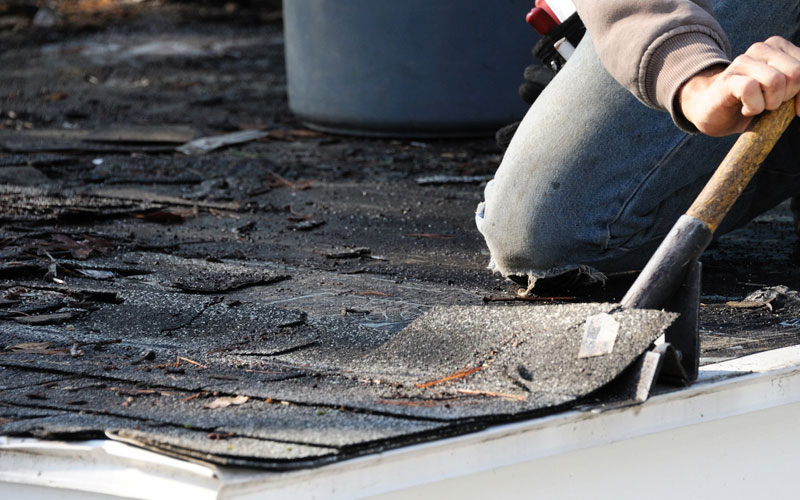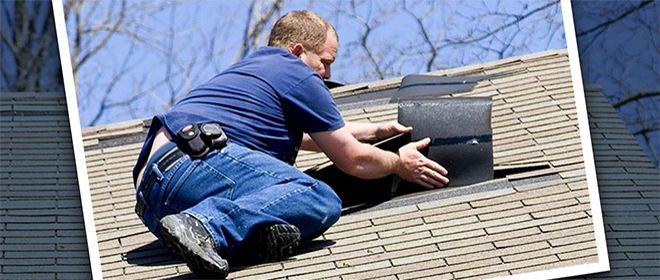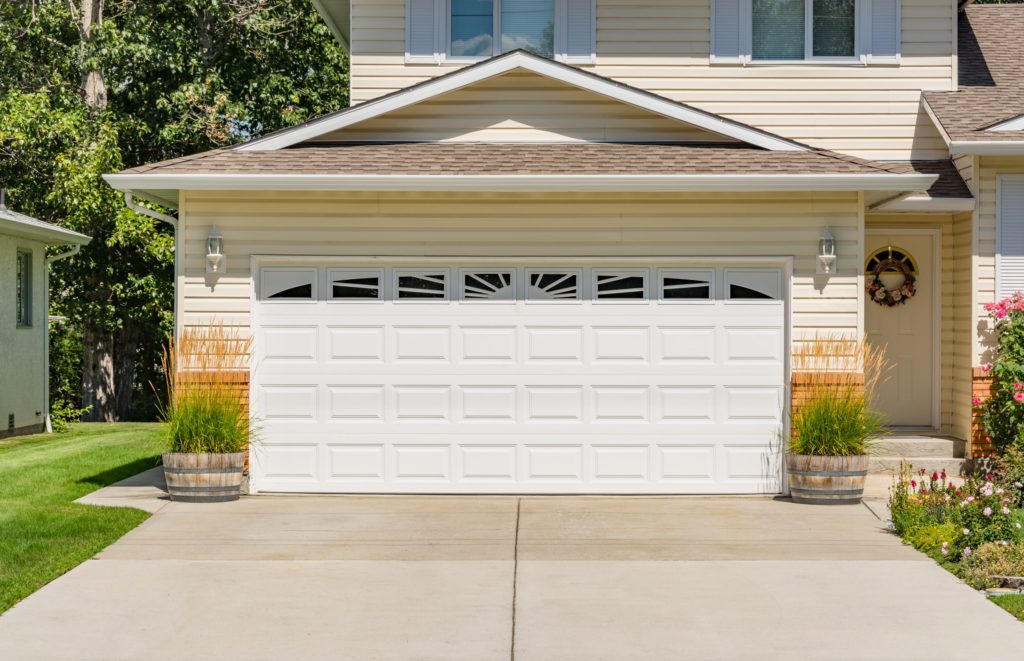DIY or Call a Pro? A Comprehensive Guide to Repair Leaking Roof
Do you have a leaky roof? Are you trying to decide whether to take on the repair leaking roof yourself or call in a professional? Repairs and maintenance of your home’s roof can quickly become complicated when not done correctly and timely. Instead of tackling this task alone, why not be informed about the different options out there? This comprehensive guide will provide exactly that – an analysis of DIY roof repairs versus those made by certified professionals so that you can make an educated decision concerning your leaking roof issue.
Understanding the Basics of Roof Leak Repair
Before making a decision on who should handle your roof leak repair, it’s essential to thoroughly understand the basics of what the repair entails. A roof leak, although it may sound simple, can have a variety of causes such as damaged shingles due to severe weather conditions, cracked flashing caused by aging or improper installation, or even clogged gutters leading to water overflow.
Repairing a roof leak goes beyond simply fixing a hole; it involves a comprehensive examination of the surrounding areas to identify potential problematic spots and ensure the prevention of future leaks. This process may include not only replacing damaged materials but also resealing certain areas to reinforce their waterproofing capability or even installing entirely new sections of roofing to eliminate any weak points.
By having a deeper understanding of these intricacies, you can gain a clearer perspective when deciding between a do-it-yourself (DIY) approach or calling a professional. Considering factors such as the complexity of the repair, your level of expertise, and the potential long-term implications of an improperly fixed roof leak can help you make an informed decision that ensures the longevity and integrity of your roof.
Identifying the Cause of Your Roof Leak
The first step in addressing a roof leak is accurately pinpointing its source. While some leaks are apparent and easy to find, others can be elusive, appearing far from their actual origin. Here are a few common causes of roof leaks:
- Shingle Damage: Broken or missing shingles can be a direct cause of leaks. Inspect your roof for any irregularities in the shingle pattern or noticeably damaged ones.
- Flashing Cracks: The metal installed in the roof joints to prevent water seepage, known as flashing, can crack over time, leading to leaks.
- Improper Sealing: Vents and chimneys without proper sealing can become entry points for water, causing a leak.
- Clogged Gutters: Blocked gutters prevent water from draining, causing it to seep into the roof structure.
- Age: No roof lasts forever. Over time, the materials deteriorate, and leaks become more likely.
Remember, the location of water stains in your interior may not directly correspond to the location of the leak on the roof due to the water’s ability to travel before seeping through the ceiling. As such, a thorough examination is essential. If you’re unable to identify the leak’s exact location or its cause, this might be a sign that a professional should handle the repair.

Professional Roof Leak Repairing
DIY Repairs vs Professional Repairs – Pros and Cons
DIY Repairs
Pros
- Cost Saving: One of the primary reasons homeowners opt for DIY repairs is the potential cost savings. By doing the work yourself, you can save on labor costs, which can be quite significant.
- Time Management: With DIY, you have the flexibility to work on the repairs whenever it suits you. This means you can manage your time as per your convenience.
Cons
- Lack of Expertise: Unless you have experience in roofing, you might not have the skill set required to effectively repair roof leaks. This could lead to ineffective repairs or even further damage.
- Safety Risks: Roof repair involves working at heights, which can be dangerous if you’re not trained or equipped to handle such situations.
Professional Repairs
Pros
- Expertise and Experience: Professionals have the necessary skills and experience to accurately diagnose and fix roof leaks. They can identify potential issues that might be missed by an untrained eye, ensuring a comprehensive solution.
- Warranty: Many professional roofers offer warranties on their work, providing you with peace of mind, knowing that if the issue recurs, it will be fixed at no extra cost.
Cons
- Cost: Hiring a professional roofer can be more expensive than DIY, primarily due to labor costs.
- Scheduling: Depending on the roofer’s availability, you might have to adjust your schedule to accommodate the repair work.
The decision between DIY and professional roof leak repair ultimately depends on the complexity of the issue, your comfort and skill level with such repairs, and your budget. It’s essential to weigh the pros and cons of each approach before making a decision.
How to Inspect Your Roof for Damage
Before embarking on any roof repair, a thorough inspection is necessary to identify the potential areas of damage. Here’s a step-by-step guide on how to do it:
- Safety First: Always prioritize your safety when inspecting your roof. Use a sturdy ladder, wear non-slip shoes, and consider using a safety harness to prevent falls. If your roof is steep or high, consider hiring a professional.
- Visual Inspection: Start with a visual inspection from the ground. Look for obvious signs of damage such as missing or broken shingles, damaged flashing, or large debris on the roof.
- Close-up Inspection: If safe to do so, climb onto your roof for a closer look. Check for cracked, loose, or missing shingles, damaged flashing, or sealant around roof penetrations like chimneys, vents, and skylights.
- Inside-Out: Don’t forget to examine your attic and interior ceilings for signs of leakage like water stains, mold, or dampness.
- Gutter Check: Examine your gutters and downspouts. Look for granules from asphalt shingles, which could indicate shingle deterioration.
Remember, it’s essential not to walk on a damaged roof as it could lead to further damage or personal injury. If you’re not comfortable performing the inspection yourself, hire a professional.
Note: Regular roof inspections are vital to catch potential problems early and extend the lifespan of your roof. It’s recommended to inspect your roof at least twice a year or after severe weather events.
Tips for Choosing a Professional Roof Leak Repair Company
When choosing a professional roof leak repair company, consider the following crucial factors:
- Experience: Look for a company with a significant amount of experience in the roofing industry. The more experience they have, the better they’ll be able to handle any unexpected challenges that come up during the repair.
- Licenses and Certifications: Always ensure that the roofer you choose is licensed and certified. This will help guarantee that they adhere to industry standards while carrying out the repair work.
- Insurance: Hiring an insured company is crucial. This way, you won’t be liable for any accidents that occur on your property during the repair work.
- Local References: Check for references from local customers. Speak to these customers, if possible, to get their feedback on the company’s service quality.
- Warranty: Choose a company that provides a warranty for their work. This provides you with protection should any issues arise following the repair.
- Transparent Quoting: The company should provide a clear and detailed quote, explaining all the costs associated with the repair work.
- Customer Service: Pay attention to their customer service. A company that prioritizes your needs and concerns is likely to provide a satisfactory service.
Remember, it’s worth taking the time to find the right roofing company, as a good professional will save you both time and money in the long run.

Roof Repairing Services
Safety Precautions When Doing DIY Repairs on Your Roof
When undertaking DIY repairs on your roof, it is crucial to follow certain safety measures to prevent accidents or injuries. Here are key precautions that you should consider:
- Appropriate Equipment: Utilize the right tools for the job. This includes a sturdy ladder, non-slip shoes, gloves, and safety glasses.
- Harness: Wear a safety harness that is securely attached to something sturdy. This can prevent a dangerous fall.
- Weather: Only work on a roof in good weather. Rain, wind or snow can make the roof slippery and highly dangerous.
- Avoid Working Alone: It’s safer to have someone with you when you’re working on the roof. They can hold the ladder for you and be there in case of an emergency.
- Know Your Limitations: Don’t overestimate your abilities. If a repair job seems too complex or risky, it’s better to hire a professional.
- Keep Your Workplace Clean: Keep your tools organized and the work area free from debris to reduce the risk of accidents.
- Stay Clear of Power Lines: Always be aware of the location of power lines and maintain a safe distance to avoid electrocution.
Remember, DIY repairs should only be undertaken if you’re comfortable with heights and have a basic understanding of the task at hand. Do not risk your safety for a repair; when in doubt, always seek help from a professional.
Cost Comparison – DIY vs Professional Repair Services
When comparing the costs of DIY and professional repair services, it’s important to consider both the upfront and long-term costs.
DIY Repair Costs: DIY repairs often have lower upfront costs. You’ll typically only need to pay for materials and tools, which you can often use for future repairs or projects. However, remember to factor in the value of your time and potential mistakes that could lead to further damage and costs down the line.
Professional Repair Costs: Professional roofing services have higher upfront costs due to labor, but these are usually offset by the speed, efficiency, and warranty offered by professionals. They have the experience to perform the job correctly the first time, thereby reducing the likelihood of future costs from additional repairs. Moreover, many professional services include the cost of materials in their fee, and they often have access to high-quality materials at lower prices than the average consumer.
Remember, cost should not be the only deciding factor. The complexity of the job, safety risks, your skill level, and the potential long-term costs should all be considered when deciding between DIY and professional repair services.
Maintenance and Prevention Tips to Avoid Future Leaks
Regular maintenance and preventative measures can help prolong the life of your roof and avoid future leaks. Here are some tips to consider:
- Regular Inspections: Schedule regular roof inspections, at least twice a year and after severe weather conditions. Early detection of potential issues can save you from costly repairs down the line.
- Clean Gutters: Ensure your gutters and downspouts are clean and free from debris. Clogged gutters can cause water to back up and seep into your roof.
- Trim Tree Branches: Keep surrounding trees trimmed to prevent branches from scraping and damaging your roof.
- Check Sealants: Regularly check and maintain the sealant around roof installations like chimneys, skylights, and vents.
- Maintain Flashing: Make sure the flashing around your roof is in good condition. Deteriorated flashing can allow water to enter your home
- Replace Damaged Shingles: Replace cracked or missing shingles as soon as possible to prevent water infiltration.
- Proper Ventilation: Ensure your attic has proper ventilation. Poor ventilation can lead to heat buildup, causing your roof shingles to warp or buckle.
- Check Attic Insulation: Proper attic insulation can prevent water vapor from seeping into your roof, reducing the risk of mold and rot.
Remember, regular maintenance is key to keeping your roof in good condition and avoiding future leaks.

Roof Leak Repairing
In conclusion, repairing a leaky roof is a crucial task that should not be taken lightly. It’s worth taking the time to research and choose a reputable roofing company that provides quality service, warranty protection, and transparent quoting. If choosing to do DIY repairs, it’s important to prioritize safety by following precautions such as using appropriate equipment and knowing your limitations. When comparing costs, consider both the upfront and long-term costs of DIY versus professional repair services. And remember, regular maintenance and preventative measures can help prolong the life of your roof and avoid future leaks. With these tips in mind, you can ensure that your roof remains a sturdy and reliable protector for your home.
https://www.google.com/maps?cid=465871782046421571



 (210) 777-7663
(210) 777-7663
